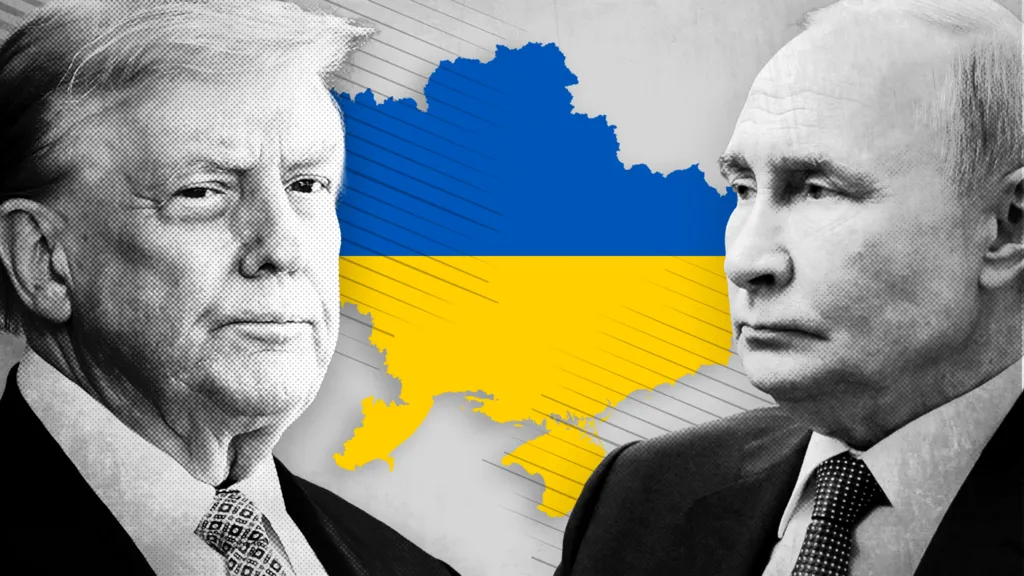
 BBC
BBCSpeculation has swirled over whether the Trump-Putin summit will result in the map of Ukraine being forcibly – and fundamentally – altered.
Russia has laid claim to vast parts of Ukraine since 2014, when President Vladimir Putin made his first move.
At the time, in the space of a short few months, Moscow carried out the relatively bloodless occupation and annexation of the Crimean peninsula.
But that was followed by a Russian-backed separatist movement in the eastern Donbas region – specifically the two regions, or "oblasts", known as Donetsk and Luhansk.
A war simmered there for eight years.
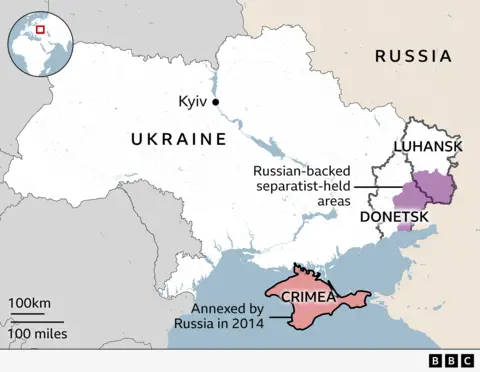
Ukraine lost around 14,000 soldiers and civilians during this period.
But in February 2022, Putin launched his full-scale invasion. Russian troops quickly reached the outskirts of Kyiv and seized huge swathes of the south, including big chunks of two more oblasts, Zaporizhzhia and Kherson.
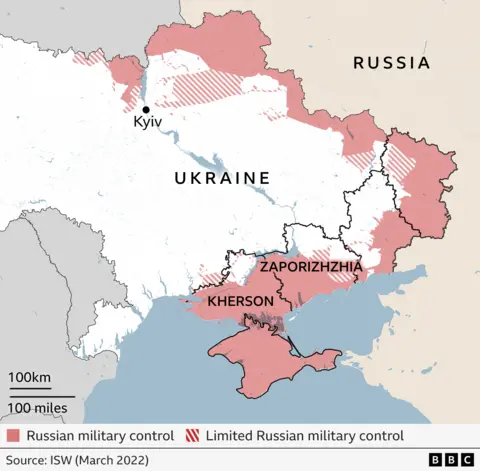
The war has ebbed and flowed ever since. Russia now controls rather less territory - down from about 27% in the spring of 2022 to around 20% now. In the east, Russian forces are advancing, but very slowly and at great cost.
President Volodymyr Zelensky of Ukraine says an unconditional ceasefire is needed now. European allies also insist on on a halt in fighting. US President Donald Trump says that is what he has been trying to achieve.
But in the run-up to his Alaska summit with Putin, Trump has started talking, instead about territorial swaps. That has sent shockwaves across Kyiv and Europe.
It is not at all clear what land Trump is referring to, or what those swaps could look like, given that all the territory in question legally belongs to Ukraine.
As of August 2025, the territory of Ukraine looks as follows:
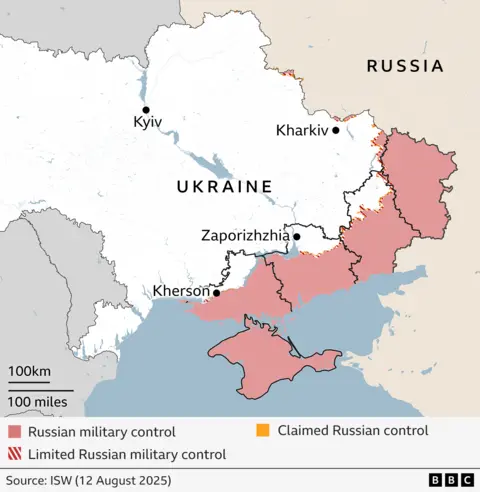
Russia would dearly love to expand its control over the entirety of Luhansk and Donetsk.
Some reports suggest that Putin is demanding that Ukraine hand over the remaining territory it controls in both oblasts.
But that would mean Kyiv giving up on places which tens of thousands of Ukrainian soldiers have died trying to protect - cities like Kramatorsk and Slovyansk, and a fortified line protecting Ukrainian territory to the north and west.
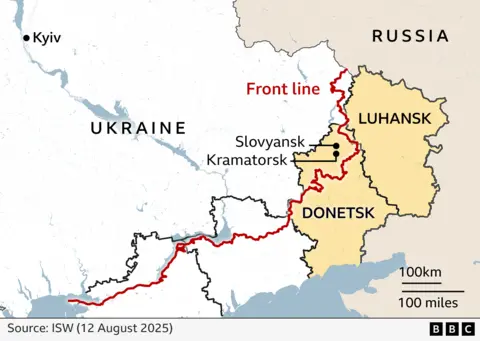
For Kyiv, such a concession would be a bitter pill to swallow. For Moscow, whose losses have been even more catastrophic, it would be seen as victory.
Zelensky said on Tuesday that Ukraine "could not" leave the Donbas as Moscow would use the region as a springboard to attack the rest of the country.
In recent days, Russian forces appear to be pushing hard, and making progress, near the town of Dobropillya. But it's not yet clear whether this marks a significant strategic move or just an effort to show Trump that Moscow has the upper hand.
What about Zaporizhzhia and Kherson, captured in 2022?
Here, it's reported, Russia is offering to halt its offensive and freeze the lines.

But would Russia be prepared to give any of it back?
On Monday, Trump talked vaguely about "ocean-front property" – presumably a reference to some of this shoreline, along the Sea of Azov or Black Sea.
But this is all part of Putin's strategically vital land bridge connecting Russia to occupied Crimea.
It's hard to see the Russian leader agreeing to give any of it up. Like Donetsk and Luhansk, Putin regards these places as part of Russia, and illegally annexed them three years ago in four referendums widely regarded as a sham.
For Ukraine, and Europe, territorial swaps – at this very early stage of the talks – are a non-starter.
A discussion about future borders may eventually come, but only when the war has stopped and Ukraine's security has been guaranteed.

26 PerFlyer

23 PerFlyer